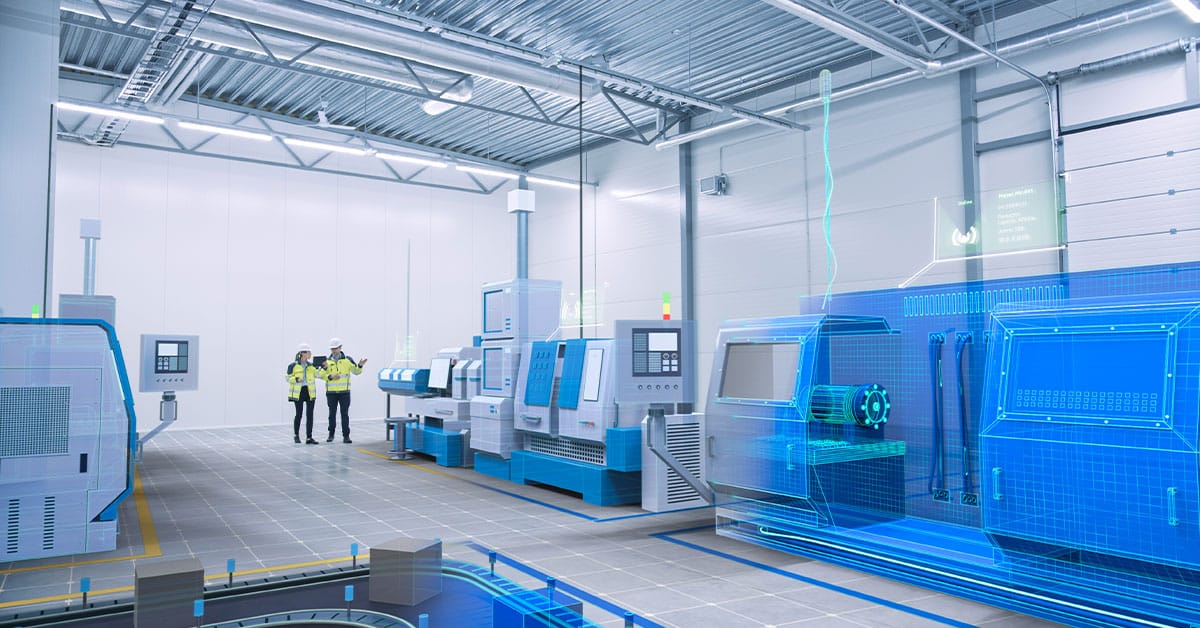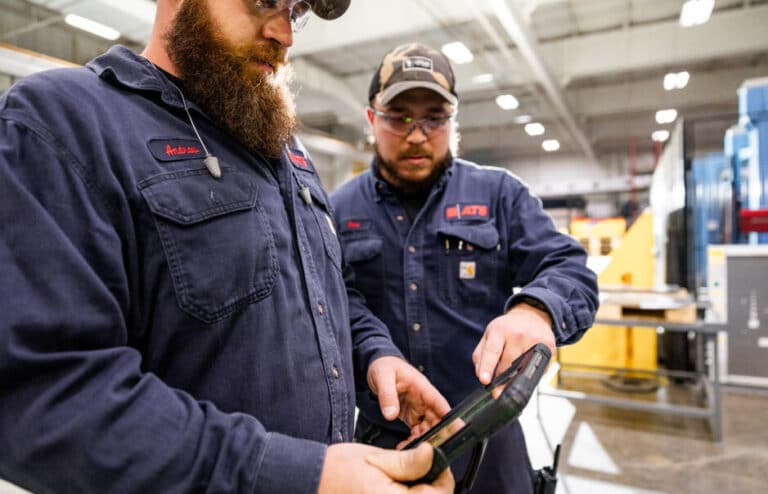Imagine you could replicate an entire factory floor, not with bricks and mortar, but with data and code. That’s the heart of what a virtual factory is: a digital twin of your manufacturing operations. This concept offers deeper insights than are normally possible by simulating what happens on the factory floor.
By turning the raw operational data of both new IoT-enabled machines and older “legacy” equipment into actionable insights, a virtual factory allows manufacturers to make proactive informed decisions, reducing downtime and boosting productivity.
Staying one step ahead of the typical problems manufacturers face, the virtual factory predicts maintenance needs, informs life cycle management and optimizes productivity. Think of it as a sandbox where you can explore scenario planning and see outcomes before they happen in the real world.
Digital twin technologies are central in these types of setups, since they combine machine data with environmental elements, allowing for advanced analytics that inform business-critical decisions. Manufacturers can then monitor key metrics like overall equipment effectiveness with unprecedented depth.
As we go deeper into our modern era of smart factories and smart industry, the idea of a virtual factory stops being an option and starts becoming a necessity.
How virtual factories work
Virtual factories have changed the game in manufacturing and industry. By creating a digital twin of an entire factory, virtual factories can bring out detailed analytics and predictive planning. Let’s dive into the intricacies in greater detail.
Machine learning and data collection
At the heart of a virtual factory is machine learning. It’s an automated system digesting vast amounts of data gathered from all corners of a factory.
Old-school machinery or next-gen IoT-enabled equipment all feed into the same data pool. From the data pool, machine learning subtly identifies patterns and trends, effectively predicting maintenance needs, orchestrating supply chains and boosting worker productivity.
Data visualization
With a virtual factory, managers gain unparalleled access to raw consumable data. Key metrics related to overall equipment effectiveness or any other salient factors can be visualized clearly.
This clarity in information allows plant managers to assess their production assets’ performance on a micro scale and strategize accordingly. Imagine understanding machine processes down to the millisecond — it’s a measure of control like never before.
Edge computing
Edge computing is yet another critical component of virtual factories. It’s all about tapping into connected devices’ computational capabilities at “the edge” of the network, where the data is generated.
This approach reduces latency, allowing for real time data processing and immediate action. By doing away with the need to send data back and forth to a centralized cloud, edge computing provides unmatched speed and reliability.
Digital twins
Digital twin technology forms the backbone of every virtual factory. It’s a live, digital replica of a factory’s complete production floor.
These twins make it possible to predict maintenance needs accurately and manage the lifecycle of machines effectively. Even more so, they allow for advanced scenario planning and risk management.
ERP integration
Enterprise resource planning (ERP) integration also plays a significant role in a virtual factory’s success.
By bringing together varied but essential sectors such as planning, purchasing, inventory, sales, marketing, finance and human resources under one roof, ERP integration ensures smooth information flow. This streamlined communication means more efficient operations and better decision-making in virtual factories.
Benefits of the virtual factory concept
Virtual factories can give us a holistic view of the entire manufacturing process. Let’s break some of the biggest benefits down:
- Advanced analytics and scenario planning: A virtual factory allows for comprehensive data analysis. Accessible, clear and digestible metrics shed light on overall equipment effectiveness and pave the way for improved operational efficiency.
- Predictive maintenance: By employing digital twin technologies, a virtual factory can assess machine health and predict maintenance requirements beforehand, ultimately minimizing unplanned downtime.
- Lifecycle management: Monitoring machine and environmental data allows for superior lifecycle management, ensuring optimum productivity throughout a machine’s operative life.
- Reduced co-evolution challenges: Virtual factories integrate various digital tools for factory design, management and analysis seamlessly. This interoperability helps effectively deal with the co-evolution of products, processes and production systems over time.
Summing up
This blog provides just a glimpse of how virtual factories are redefining the landscape of manufacturing. By facilitating seamless communication between old and new machinery, virtual factories offer a unique blend of adaptability and innovation, setting the stage for unprecedented efficiency.
Through strategies such as predictive maintenance, lifecycle management and enhanced supply chain orchestration, these cyber replicas unveil the potential for increased productivity and resource optimization for all manufacturers and producers. Ensured interoperability between various digital tools empowers manufacturers to navigate changing business environments with ease and agility.


